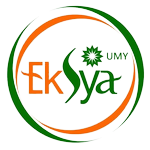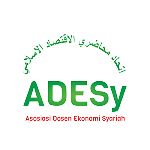Prospects for Interest-Free Micro Finance in India: An Empirical Study
DOI:
https://doi.org/10.18196/jiebr.v1i1.11578Keywords:
Micro Finance; Poor; Attitude.Abstract
Despite the growth of Islamic banking and finance, in recent times due attention were given to the issue of Islamic microfinance. It is so because, as per various estimates over two billion people across globe are still living in a miserable poverty which is a global challenge and India not being an exception. Since the Poverty remains, a continuous challenge throughout the human history so as the efforts to overcome poverty. Among various efforts a conventional micro finance a “new model†received global recognition and a hope. But even if successful stories in bringing development and eradicating poverty by small credit tool to poor and by gaining growing attentions by world bank , still millennium development goal remains unachieved. The critics’ remains not only restricted to, in reaching all forms of poor rather high unbearable interest rates and avoidance by Muslims due to interest are on debate. As an alternative, Islamic finance has its operations both in Islamic and Non-Islamic countries along Islamic Micro finance. It is so because Islamic microfinance programs are complement to Islamic banking, both in ideological and in practical terms. Although IMF is still in infancy stage even though growing rapidly. Various experiments either on individual level or group level are mostly practicing Islamic micro credit products. But Islamic micro crediting has not been yet formally reached to people for India. Therefore this study aims to investigate the prospects based on determinants. The target population has been taken a potential benifacries of interest free micro finance. The paper adopts a Quantifiable approach as a Questionnaire distributed in paper format based on stratified sampling with 602 as final responses. The findings shows that in general the community is cognizant of the various terms used in Interest free microfinance but in respects of products/services existing by Islamic microfinance institutes, it indicates the level of awareness is very low.
References
A. Aziz Ansari and Hareem Tariq (2017). “Attitude for prospective Islamic banking in India: An analysisâ€, 5(7), 94-100.
Abbas, K, Razak, D. and Saad, N. (2014). “The Perception of Micro- Entrepreneurs and Petty Traders towards conventional and Islamic Microfinance: a case study of Pakistanâ€. Journal of Islamic Finance, 3(1), 38-48.
Abduh, M. and Omarov, D. (2013, July-Sept). “Muslim’s Awareness and Willingness to Patronize Islamic Banking in Kazakhstanâ€. Journal of Islamic Banking and Finance, 16-23.
Abdul Hasan M. Sadeq (1995). “Awqaf, perpetual charity and poverty alleviationâ€, 137.
Abdul Rahman, A.R. (2007). "Islamic Economics: Theoretical and Practical Perspectives in a Global Context Islamic Microfinance: A Missing Component in Islamic Banking". Islamic studies, 1-2, 38-53.
Abdullah, N.I. & Dusuki, A.W. (2006). “Customers perceptions of Islamic hire-purchase facility in Malaysia: An empirical analysisâ€. IIUM Journal of Economics and Management, 14(2), 177-204.
ADB. (2009). “Islamic Republic of Pakistan: Improving Access to Financial Services–Islamic Finance Componentâ€. Vol.IV. Asian Development Bank. Prepared by FINCON Service Inc. Canada for Ministry of Finance and State Bank of Pakistan. TA NO. 4894-ADB.
Ahmad, A., Rehman, K. and Saif, M. (2010). “Islamic Banking Experience 126 of Pakistan: Comparison between Islamic and Conventional Banksâ€. International Journal of Business and Management, 5(2), 137-143.
Ahmad, A.U. and Ahmad, A.B. (2009). “Islamic microfinance: the evidence from Australiaâ€. Humanomics, 25(3), 217-235
Ahmad, H. (2002). “Financing micro enterprises: an analytical study of Islamic microfinance institutionsâ€. Islamic Economic Studies, 9(2), 27-64.
Ahmad, M. (2011). “The Role of RDS in the Development of Women Entrepreneurship under Islamic Microfinance: A Case Study of Bangladeshâ€. In M. Obidullah & H. Salma (Eds.), Islamic Microfinance for Micro and Medium Enterprises. Jeddah: IRTI and UBD.
Ahmad, N, & Haron, S. (2002). “Perceptions of Malaysian corporate customers towards Islamic banking products and servicesâ€. International Journal of Islamic Financial Services, 3(1), 13-29.
Akhter, W., Akhtar, N. & Jaffri, S.K.A. (2009). “Islamic Micro-Finance and Poverty Alleviation: A Case of Pakistanâ€. 2nd CBRC. Lahore, Pakistan Lahore,https://akhuwat.org.pk/islamic-micro-finance-and-povertyalleviation- a-case-of-pakistan/Pakistan November 14, 2009
Alfin, S. & Md. Saad, N. (2018). “Determinants of awareness on Islamic microfinance among Cambodian Muslimsâ€. International Journal of Development and Sustainability, 7(9), 2227-2241.
Algaoud, L.M. & Mervyn K. Lewis. (2007). "Islamic critique of conventional financing." In M. Kabir Hassan and Mervyn K. Lewis, Handbook of Islamic Banking, 21-37. Cheltenham: Edward Elgar Publishing Limited.
Ali bhai, S., Bell, S. & Conner, G. (2017). “What's Happening in the Missing Middleâ€
Alsadek H. Gait and Andrew C. Worthington (2009). “Attitudes, Perceptions and Motivations of Libyan Retail Consumers toward Islamic Methods of Financeâ€. https://doi.org/10.2139/ssrn.1370736.
Amin, H. (2012), “Patronage factors of Malaysian local customers toward Islamic credit cardsâ€, Management Research Review, 35(6), 512-530.
Amin, H., Rahman, A.R., Sondoh, S.L.Jr., Hwa, A.M.C. (2011), “Determinants of customers’ intention to use Islamic personal financingâ€: The case of Malaysian Islamic banksâ€. Journal of Islamic Accounting and Business Research, 2(1), 22-42.
Asyraf, W. Dusuki (2008). “Lifting barriers in financing the small and poor entrepreneurs: Lesson from group-based lending scheme and ibn khaldun’s social solidarityâ€, 22-44.
Ayaz ul Haq & Kashif ur Rehman (2017). “Major Challenges and Opportunities for Islamic Banking and SMEs in Pakistan: Emerging Issues in Economics and Financeâ€. Journal of Managerial Sciences. XI(3), 355-370.
Bagsiraj, M.G.I. (2003). “Islamic Financial Institution of India: Progress, Problems and Prospectsâ€, King Abdul Aziz University, Islamic economic research series 4, 227.
Haque, M. S., &Yamao, M. (2011). Prospects and challenges of Islamic microfinance programmes: a case study in Bangladesh. International Journal of Economic Policy in Emerging Economies, 4(1), 95-111.
Rahman, A. R. A. (2007). Islamic Microfinance: A Missing Component in Islamic Banking. Kyoto Bulletin of Islamic Area Studies, 2, 38–53.
Bhuiyan, A.B., Siwar, C., Ismail, A.G. & Talib, B. (2011). “Islamic Microcredit is the Way of Alternative Approach for Eradicating Poverty in Bangladesh: A Review of Islamic Bank Microcredit Schemeâ€. Australian Journal and Basics and Applied Sciences, 5(5), 221–230.
Bird, B. and Brush, C. (2002). “A gendered perspective on organizational creationâ€. Entrepreneurship theory and practice, 26(3), 41-66.
Chowdhry, S. (2006). “Creating an Islamic microfinance model: the missing dimension,†Dinar Standard: Business Strategies for the Muslim World, November 18th 2006.
Dhaoui, E. (2015). “The role of Islamic Microfinance in Poverty Alleviationâ€: Lessons from Bangladesh Experience, Research Unit Money, Development and Infrastructures (MODEVI), Faculty of Economics and Management of Sfax. Dinar Standard: Business Strategies for the Muslim World. 1-19.
Dusuki, W.A. (2006). “Empowering Islamic Microfinance: Lesson from Group-Based Lending Scheme and Ibn Khaldun’s Concept of Asabiyahâ€, Paper presented at Monash University 4th International Islamic Banking and Finance Conference. Kuala Lumpur, 13-14 November.
Echchabi, A. & Olaniyi, O. (2012). “Malaysian Consumers’ Preferences for Islamic Banking Attributesâ€, International Journal of Social Economics, 39(11), 859-874.
El-Zoghbi and Tarazi, El-Zoghbi, M. & Tarazi, M. (2013). “Trends in Sharia-Compliant Financial Inclusion. Focus Note 84â€, March 2013 CGAP, Washington D.C., 1-12.
Engel, J.F., Blackwell, R.D. and Kollat, D.T. (1973). “Consumer Behavior, Hinsdaleâ€: Dryden Press, New York. Dryden Press, 1978, Journal of Advertising, 8:1, 52-53, DOI: 10.1080/00913367.1979.10673276.
Erol, C., Kaynak, E. and El-Bdour, R. (1990). "Conventional and Islamic Banks: Patronage Behavior of Jordanian Customers", International Journal of Bank Marketing, 8(4), 25-35.
Faizan Khan Sharwani (2017). “A comparative study of interest free micro finance and Indian micro finance system for eradication of poverty: Problems and challengesâ€, 1, 1-11.
Gerrard, P. and Cunningham, J. (1997). “Islamic banking: a study in Singaporeâ€. International Journal of Bank Marketing, 15(6), 204-216.
GIFR (2012). “Global Islamic Finance Report 2012, Global Islamic Microfinanceâ€. Landscape. http://www.gifr.net/gifr2012/ch_25.pdf, Retrieved on 28 February 2016.
Global forum (2018). “Islamic microfinance –operation, practice and outreachâ€, 1-18.
Hafiz Zahid Mahmood, Kausar Abbas and Mehreen Fatima (2017). “Islamic microfinance and household welfare nexus: Empirical investigation from Pakistanâ€. DOI 10.1186/s40497-017-0075-1,
Hanzala Awais and Dr. Ram Prahlad Choudhary (2020). “Islamic banking: A step taking financial inclusion beyond bank accounts in Indiaâ€. 68(8), 503-521.
Haron, S., Ahmad, N. & Planisek, S. (1994). "Bank Patronage Factors of Muslim and Non-Muslim Customers". International Journal of Bank Marketing, 12(1), 32-40.
Hasbi, H. (2015). “Islamic microfinance institution: The capital structure, growth, performance and value of firm in Indonesiaâ€. Procedia - Social and Behavioral Sciences, 211, 1073-1080.
Hassan, T., Mohamad, S. & Bader, M.K. (2009). "Efficiency of conventional versus Islamic banks: evidence from the Middle East". International Journal of Islamic and Middle Eastern Finance and Management, 1753-8394.
Hegazy, I. (1995). "An empirical comparative study between Islamic and commercial banks' selection criteria in Egypt." International Journal of Commerce and Management, 5(3), 46-61.
Imene, Berguiga and Yosra May (2017). “Philippe Adair The social and financial performance of Microfinance institutions in the MENA region: Do Islamic Institutions perform betterâ€.
Iqbal, Z. & Mirakhor, A. (2005). “Stakeholders model of governance in Islamic economic systemâ€, Islamic Economic Studies, 11(2), 43-63.
Israr, A., Qureshi, F.A. & Butt, M. (2018). “Selection Criteria of Public for Account Opening: A Case Study of Islamic Banks in Pakistanâ€. Al- Iqtishad Journal of Islamic Economics, 10(1), 153-170.
Schlenker, M., &Baruchel, J. (1978). Neutron techniques for the observation of ferroâ€and antiferromagnetic domains. Journal of Applied Physics, 49(3), 1996-2001.
Fishbein, M., &Ajzen, I. (1975). Intention and Behavior: An introduction to theory and research.
Jaffari, S.I.A., Saleem, S., Abideen, Z.U., Kaleem, M.K., Malik, N. & Raza, M. (2011). “An examination of Challenges and prospects of Microfinance Sector of Pakistanâ€. European Journal Economics, Finance and Administrative Sciences, Issue-31.
Jamal, A. & Naser, K. (2003). “Factors Influencing Customer Satisfaction in the Retail Banking Sector in Pakistanâ€, International Journal of Commerce and Management, 13(2), 29-53.
Jamshidi, D., Hussin, N. (2013). “Determining a Conceptual Framework for Adoption of Islamic Credit Card in Context of Malaysiaâ€. Journal of Basic and Applied Scientific Research, 3, 188-196.
Kabir Hassan (2010). “An integrated poverty alleviation model combining zakat, Awqaf and micro-financeâ€, Seventh International Conference – The Tawhidi Epistemology: Zakat and Waqf Economy, Bangi, 262-281.
Kaleem, A. & Ahmed, S. (2009). “The Quran and Poverty Alleviation: A Theoretical Model for Charity-Based Islamic Microfinance Institutions (MFIs)â€. Nonprofit and Voluntary Sector Quarterly, 39(3), 409-428.
Karim N., Tarazi M. & Reille X. (2008). “Islamic Microfinance: An Emerging Market Niche, CGAP Focus Noteâ€, Available at http://www.cgap.org/sites/default/files/CGAP-Focus-Note-Islamic- Microfinance-An-Emerging-Market-Niche-Aug-2008.pdf (accessed on 25,December 2018).
Khan, M. (2011). “Islamic Banking Practices: Islamic Law and Prohibition of RibÄâ€. Islamic Studies, 50(3/4), 413-422.
Khandelwal, A.K. (2007). “Microfinance Development Strategy For Indiaâ€. EPW, 1127-35.aziz
Kotler, P. (1997). “Marketing management: Analysis, planning, implementation and controlâ€, Prentice Hall, Upper Saddle River, New Jersey, https://trove.nla.gov.au/version/45009500.
Krueger N. Reilly, M.D. & Carsrud, A.L. (2000). “Competing Models of Entrepreneurial Intentionsâ€. Journal of Business Venturing, 15, 411-432.
Lateh, N., Ismail, S. & Ariffin, N.M. (2009). “Customers' perceptions on the objectives, characteristics and selection criteria of Islamic bank in Thailandâ€, Gadjah Mada International Journal of Business, 11(2), 167-189.
Ledger Wood, J. (1999). “Microfinance Handbook: an Institutional and Financial Perspectiveâ€, Washington DC: The World Bank, 1-2, 63-90.
Lewis, M and Algaoud L (2001). Islamic banking. In Edward Elgar. Cheltenham. Maloney, R. P. (1971). “Usury in Greek, Roman and Rabinic Thoughtâ€. Traditio, 79-109.
Majeed, M.T. & Zainab, A. (2017). “How Islamic is Islamic banking in Pakistan?†International Journal of Islamic and Middle Eastern Finance and Management, 10(4), 470-483.
Mason, C. & Brown, R. (2014). “Entrepreneurial ecosystems and growth oriented entrepreneurshipâ€. Final Report to OECD, Paris, 30(1), 77-102.
Metawa, S. & Almossawi, M. (1998). “Banking behavior of Islamic bank customers: perspectives and implicationsâ€. International Journal of Bank Marketing, 16(7), 299-315.
Metwally, M. (1996). “Attitude of Muslims towards Islamic Banks in dualbanking systemâ€. American Journal of Islamic Finance, 6, 11-17.
Mir, Shabir Mushtaq (2015). “A study of perception and attitudes of Stakeholders towards Islamic banking in Indiaâ€, University of Kashmir,India. Chapter 4, 1-15.
Mohamed El-Komi & Rachel Croson (2013). “Experiments in Islamicmicrofinance Journal of Economic Behavior & Organizationâ€, 95, 252- 269; www.elsevier.com/locate/jebo.
Mohammad Soleh Nurzaman (2016). “Evaluating the Impact of Productive Based Zakat in The Perspective of Human Development Index: A Comparative Analysis Kyoto Bulletin of Islamic Area Studiesâ€, 9 (March 2016), 42-62.
Mohammed Khaled (2011). CGAP Report (2011),https:// www.cgap. org/sites/default/files /organizational-documents/CGAP-Annual-Report-Dec- 2011.pdf, 1-68.
Mohammed Obaidullah Hajah, Salma Haji Abdul Latiff (2008). “Islamic finance for micro and medium enterprisesâ€. Islamic Research & Training Institute Islamic Development Bank & Centre for Islamic Banking, Finance and Management University Brunei Darussalam. http://staff.ui.ac.id/system/ files/use rs/dodik.siswantoro/ publication/ obaidullah-micro4.pdf, 1-339.
MohdShahril and Ahmad Razimi (2017). â€Non-Muslim Perception onIslamic Banking Products and Services in Malaysia, World Journal ofIslamic History and Civilization, 7(1), 7-11.
Mohd-Dali, N.R.S. and Rais, Azira (2006). “Factors Influencing Islamic Credit Cards Holders. An Online Studyâ€, Paper presented at the 4th International Islamic Banking and Finance Conference: Expanding Islamic Finance Through Product Development, JW Marriot Kuala Lumpur on 13th – 14th November, Kuala Lumpur, Malaysia.
Mosley, P. & Hulme, D. (1998). Microenterprise finance: is there a conflict between growth and poverty alleviation? World Development, 26(5), 783- 790.
Muhammad M. (2016). “Credit comfort ability and microfinance: a field study to determine peoples’ perception about conventional and Islamic microfinance in Pakistanâ€. Turkish Journal of Islamic Economics, 3(1), 37- 61.
Naser, K, Jamal, A. & Al-Khatib, K. (1999). “Islamic banking: A study of customer satisfaction and preference in Jordanâ€. International Journal of Bank Marketing, 17(3), 135.
Obaidullah, M. (2008). Introduction to Islamic Microfinance. IBF Net (P) Limited. ISBN: 978-81-905822-2-3.
Obaidullah, M. (2008). Role of Microfinance In Poverty Alleviation, 1429H., Jeddah: Islamic Research & Training Institute (IRTI), p 33-89
Omer, H. (1992). The Implication of Islamic Beliefs and Practice on Islamic Financial Institutions in the UK, PhD Dissertation, Lough Borough University.
Raghavan. V.P. (2009). “Micro-Credit and Empowerment: A Study of Kudumbashree Projects in Kerala Indiaâ€, Journal of Rural Development, NIRD, Hyderabad, 28(4), 469-484.
Raghda El Ebrashi, Rania Salem, Dina El Kayaly,Noha M El-Bassiouny (2017). "What potentials does Islamic micro-credit have? An empirical investigation in the Egyptian context", Journal of Islamic Marketing, https://doi.org/10.1108/JIMA-03-2017-0027.
Rahman, A. & Rahim, A. (2010). “An introduction to Islamic accounting theory and practiceâ€. CERT Publications Sdn. Bhd. 8(1), 124-135.
Rashidah, R and Awang, R. (2003). “Assessing Business Zakat at Pusat Zakat Selangor: Between Theory and Practiceâ€, Journal of Financial Reporting and Accounting, 1(1), 33-48.
Saad, N.M. (2012). “Microfinance and prospect for Islamic microfinance products: The case of AmanahIkhtiar Malaysiaâ€. Advances in Asian Social Science. 1(1), 27-33.
Schiffman, L.G & Kanuk, L.L. (2004). Consumer Behavior, Pearson, USA 9780131869608, https://www.pearson.com/us/higher-education/product/ Schiffman-Consumer-Behavior-9th-Edition/9780131869608.html
Sethy & Goyari (2018). “Measuring Financial Inclusion of Indian States: An Empirical Studyâ€, Indian Journal of Economics and Development, 14(1), 111-118.
Sharyarparvez (2014). “perception of Non-Muslim clients about Islamic banking in Bangladeshâ€, 6(7), 88-97.
T.R. Jain & V.K. Ohri (2017). “Statistics for economic and Indian economic development†, Global Publication Pvt. Ltd.49.
Tamanni, L. & Liu, F.H. (2017). “What is Islamic Microfinance? Microfinance for Entrepreneurial Developmentâ€. Springer, 169-195.
Teken Nasional. (2018). "Challenges for Sustainable Islamic Microfinance Institutions in Malaysia". Retrieved from https://www.tekun.gov.my/en/. Md. Faruk Abdullah, Zelhuda Shamsuddin and Suraya Mahmood, 127-140.
The World Bank (2018). “Poverty and Shared Prosperity 2018: Piecingtogether the poverty puzzleâ€. https://doi.org/10.1596/978-1-4648-0958-3
United Nation (2018). Department of economics and social affairs Realizing the Sustainable Development Goals by, for and with persons with disabilities, 1-258.
Usman, A.S. & Tasmin, R. (2016). “The Role of Islamic Micro-Finance in Enhancing Human Development in Muslim Countriesâ€, Journal of Islamic Finance, 5(1), 53-62. https://doi.org/10.12816/0027652.
Watson, J., Robinson, S. (2003). “Adjusting for risk in comparing the performances of male-and female-controlled SMEsâ€, Journal of Business Venturing, 18(6), 773-788.
Yaseen Masvood (2016). “prospects of Islamic banking in India†chapter 3, 43.
Zainuddin, Y., Jahyd, N. & Ramayah, T. (2004). "Perception of Islamic Banking: Does It Differ among Users and Non Users", Journal of Management and Business, 6(3), 221-232.
Zineldin, M. (1990). The economy of money and banking: A theoretical and empirical study of Islamic interest-free banking, Stockholm: Almquist and Wiksell International, 1-290.
Zulkhibri, M., (2015). Islamic Finance, Financial Inclusion Policy and Financial Inclusion: Evidence from Muslim Countries. IRTI Working Paper Series. WP# 1437-01.
Downloads
Published
How to Cite
Issue
Section
License
Copyright (c) 2021 Journal of Islamic Economic and Business Research

This work is licensed under a Creative Commons Attribution-NonCommercial 4.0 International License.
Journal of Islamic Economic and Business Research has CC-BY NC or an equivalent license as the optimal license for the publication, distribution, use, and reuse of scholarly work for non-commercial purpose. The non-commercial use of the article will be governed by the Creative Commons Attribution license as currently displayed on Creative Commons Attribution-NonCommercial 4.0 International License
Creative Commons License




